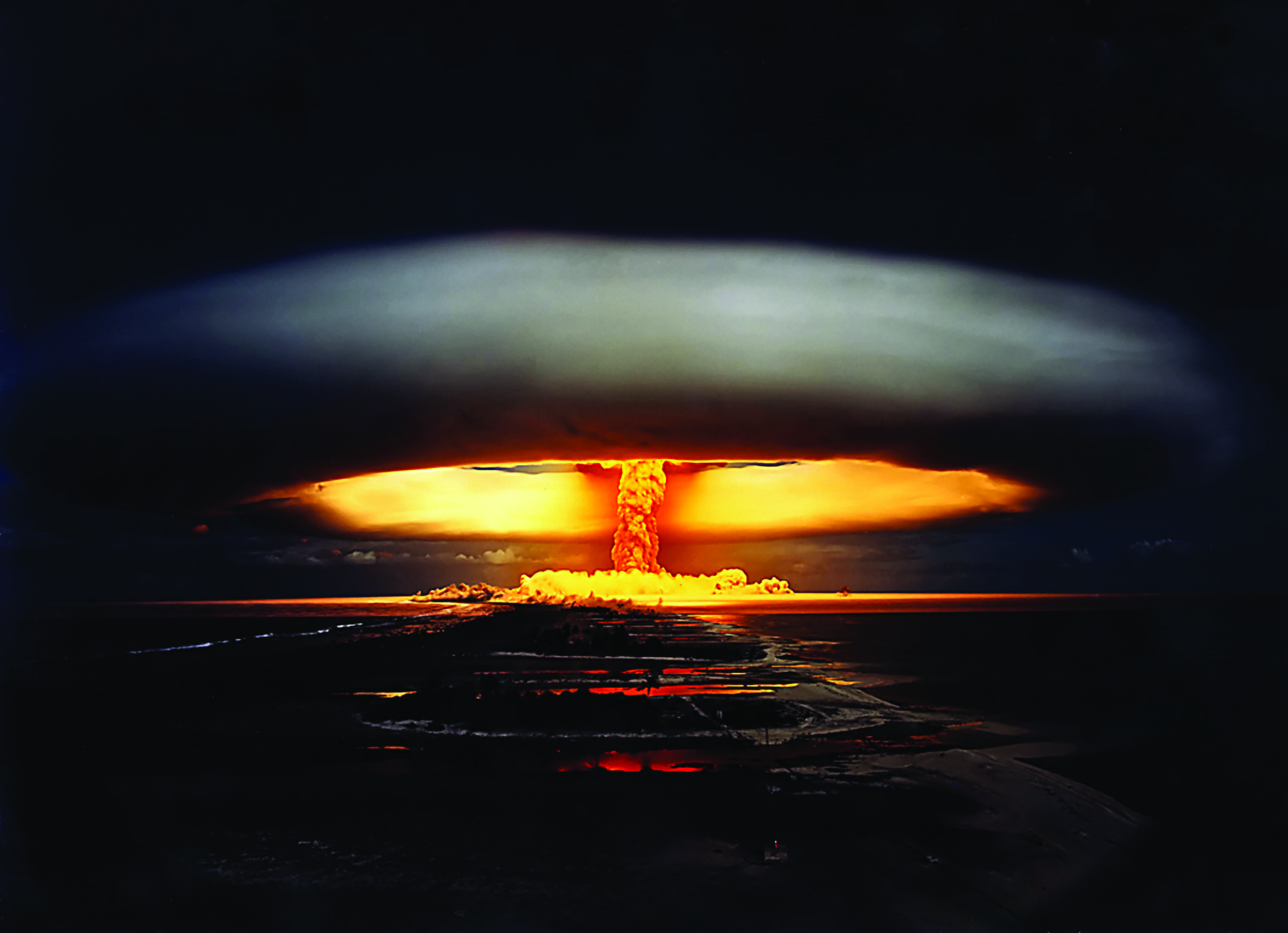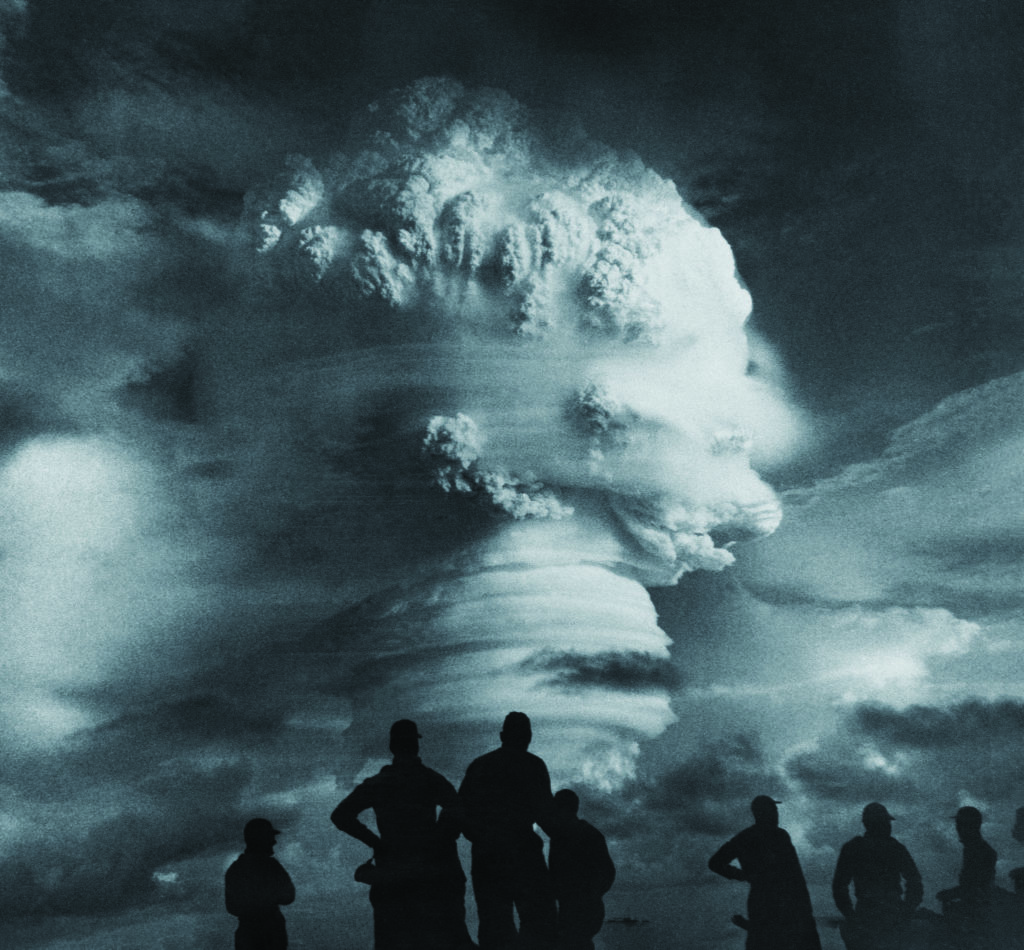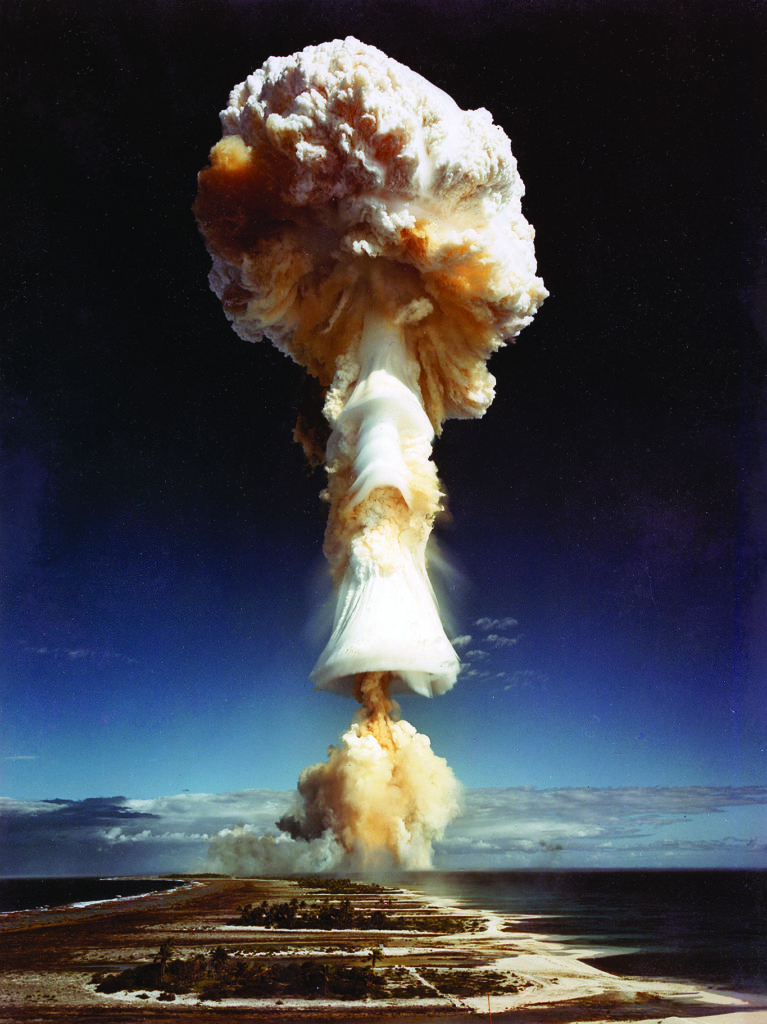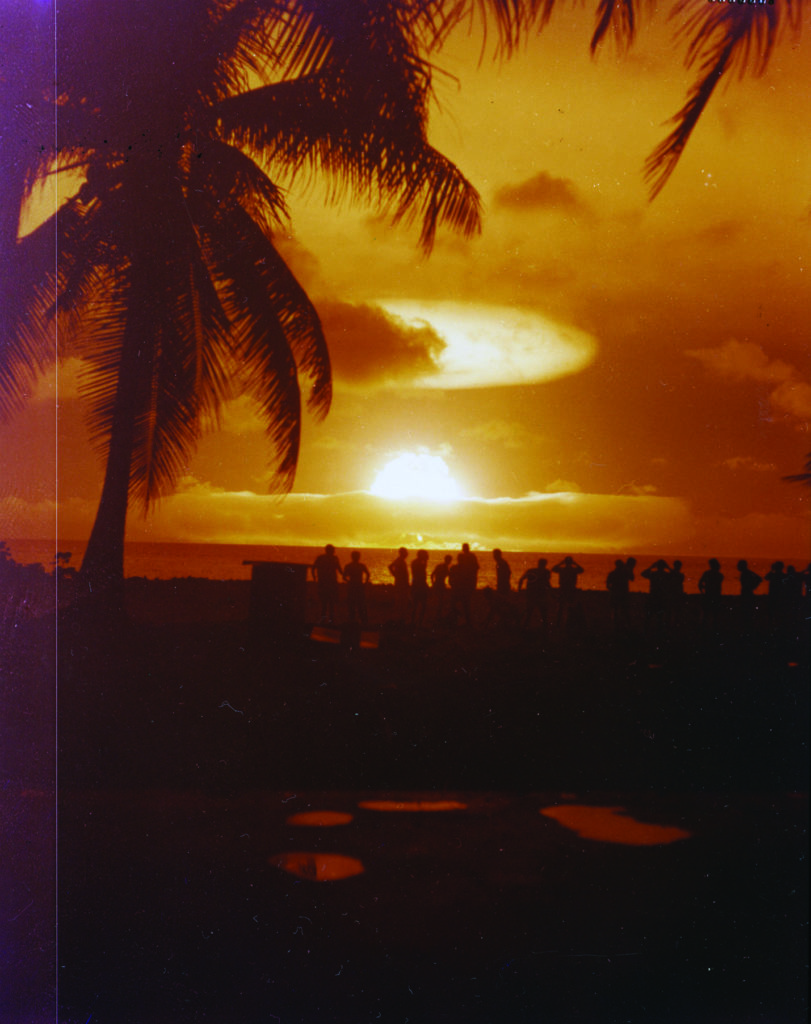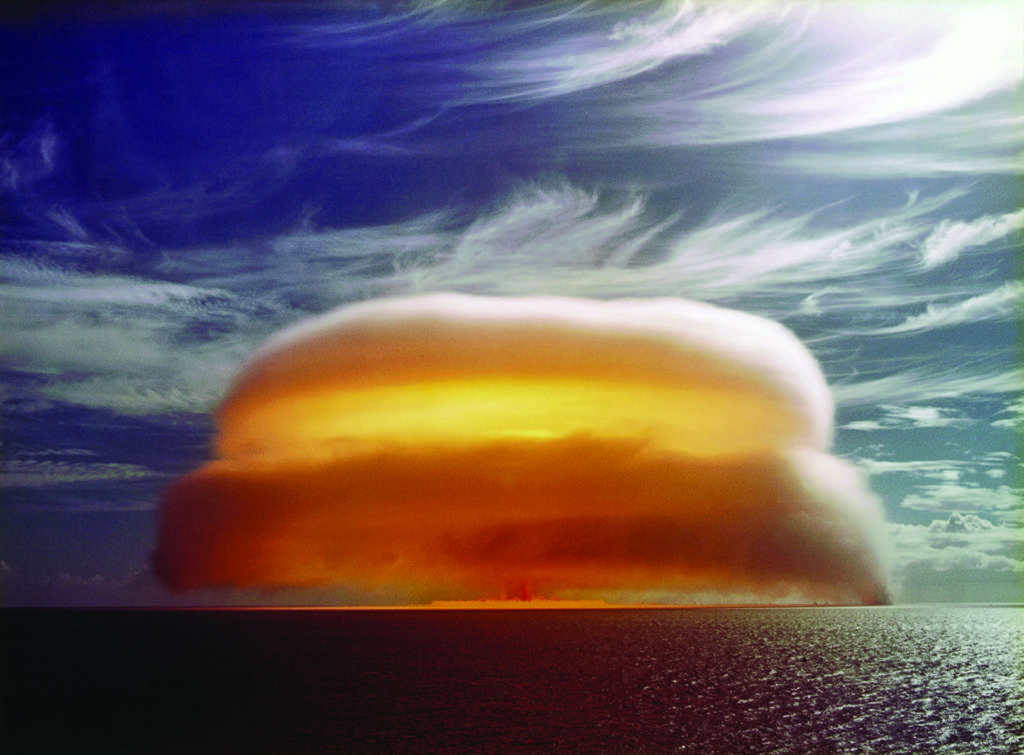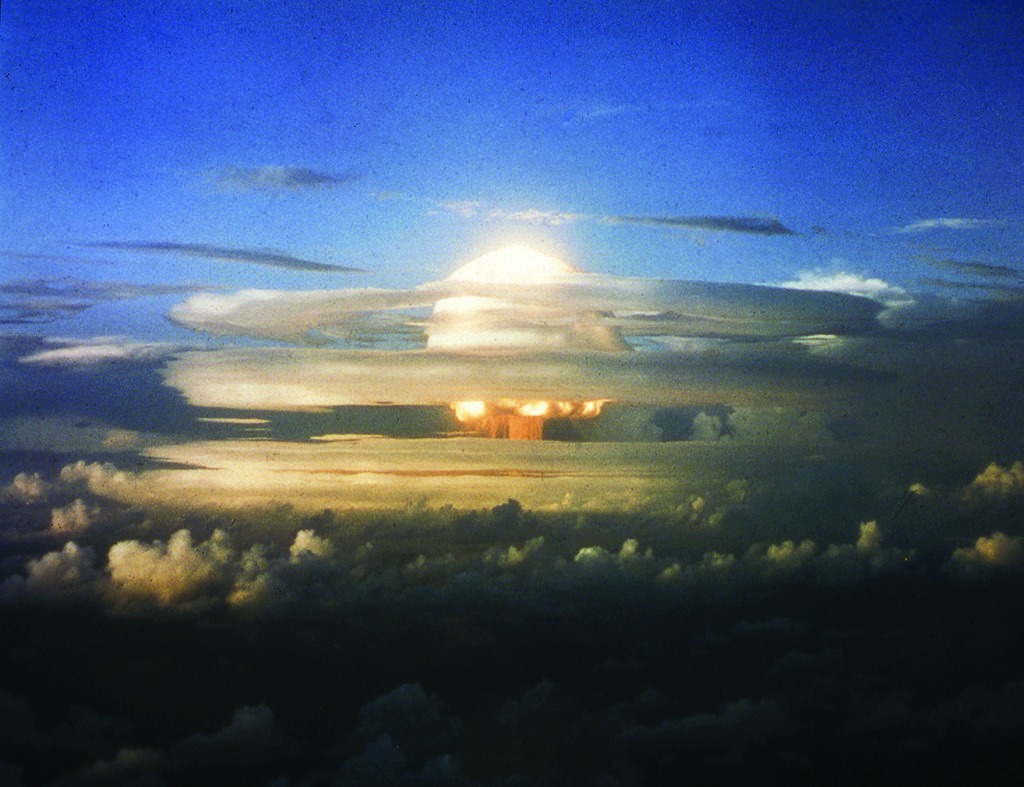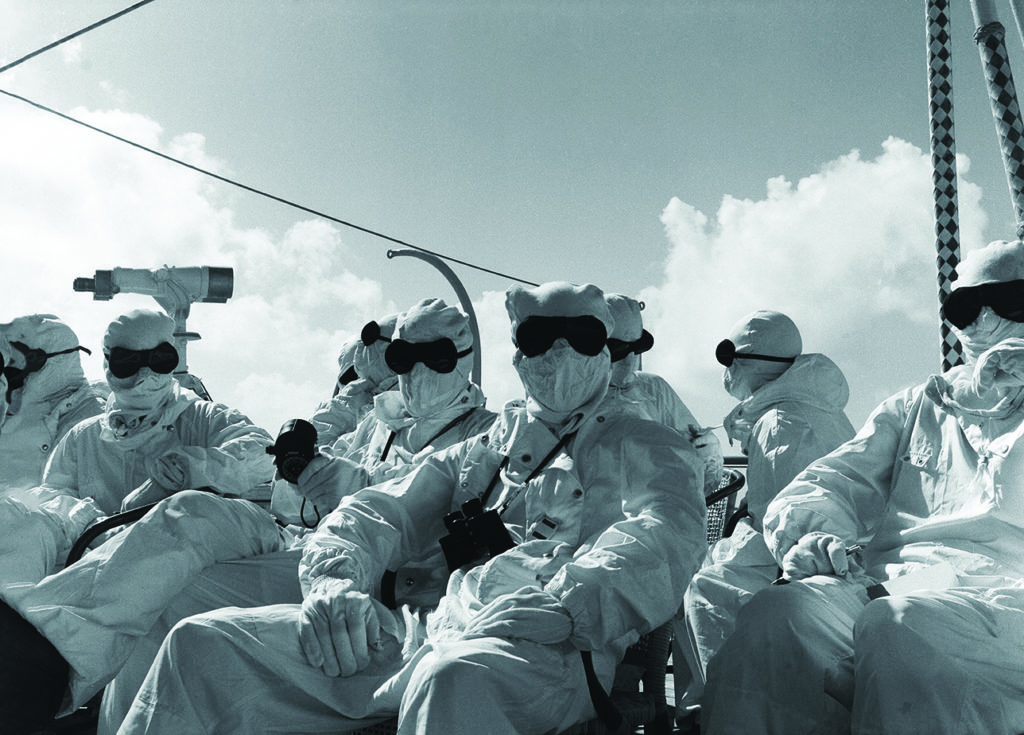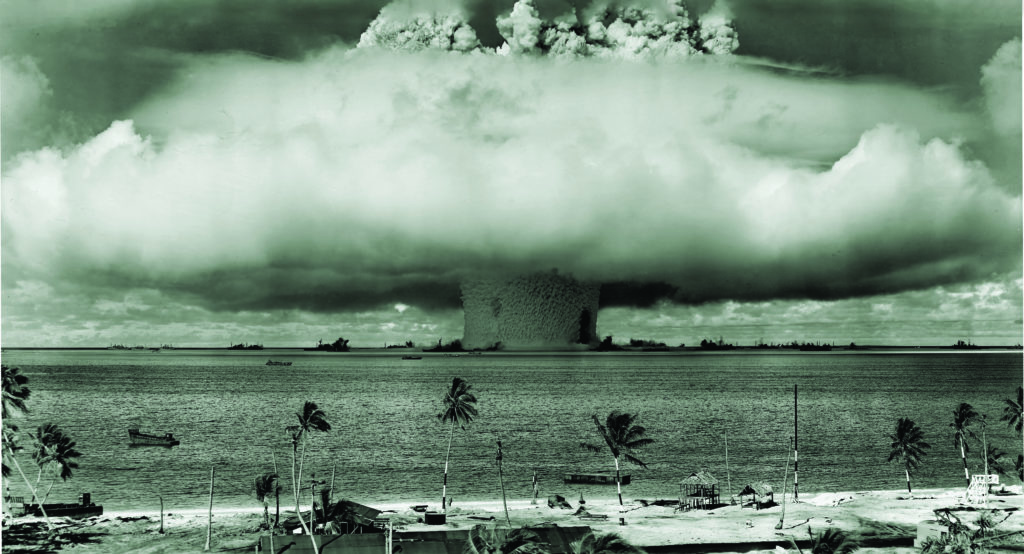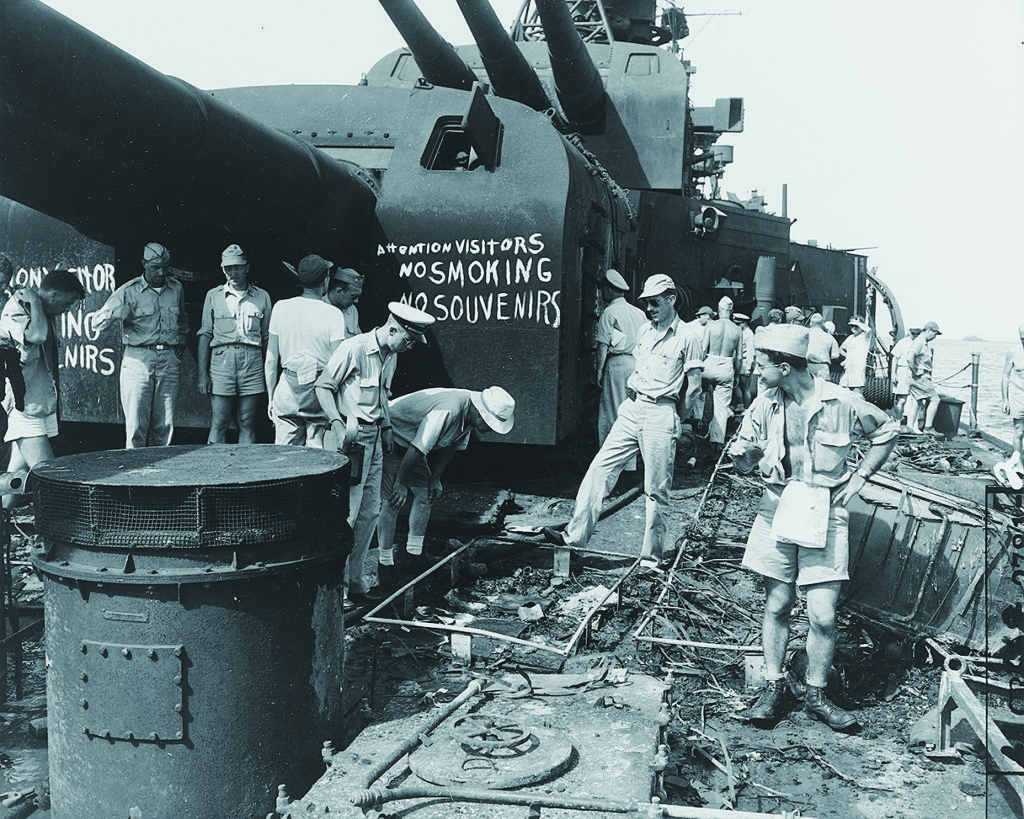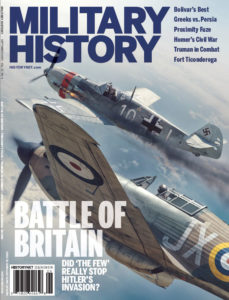On July 16, 1945, the United States conducted history’s first test of a nuclear device (code-named Trinity) in the desert scrubland of south-central New Mexico. Weeks later, on August 6 and 9, it became the first—and thus far only—nation to use nuclear weapons operationally, on the Japanese cities of Hiroshima and Nagasaki, respectively. Whether “the bomb” alone ended World War II remains in debate, but its success indisputably left other powers coveting nukes of their own.
Testing ramped up through the 1940s and ’50s, most visibly in the Pacific Ocean, initially as American physicists and military personnel sought to understand the capabilities of their superweapon and how to develop it as a deterrent to future wars. The latter goal took on new meaning on Aug. 29, 1949, when the Soviet Union tested its first nuclear device, followed by Britain on Oct. 3, 1952, and France on Feb. 13, 1960.
Testing in the Pacific included American tests mainly in the Marshall Islands (notably Bikini Atoll), British tests off Australia and in the Gilbert and Ellice islands (present-day Kiribati and Tuvalu), and French tests in Polynesia. The October 1962 Cuban Missile Crisis, which brought the United States and Soviet Union to the brink of nuclear war, sobered them and Britain the following year into signing the Partial Nuclear Test Ban Treaty, which prohibited all but underground testing. That ended most tests in the Pacific, though resident islanders still suffer health problems from the effects of radioactive contamination. MH
This article appeared in the July 2020 issue of Military History magazine. For more stories, subscribe here and visit us on Facebook:

